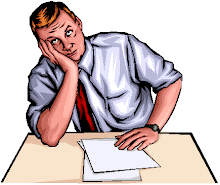This Trip, Part VI: 26 March 2011
A complimentary breakfast that would normally cost 30 euros is usually something too good to pass up. Unfortunately, such an expensive breakfast, regardless of the quality, would take too long and the return trip to London was already booked and non-flexible. So it was. I returned to the streets of Brussels to find many fewer partiers and carousers as the night before, but quite a few of their leave-behinds on the sidewalks, along with tourists.
A vital piece of the day’s potential success came in the form of Bookoo, a one-day pass for the Brussels Metro. I guess that’s meant to be pronounced beaucoup. Given the honor system set-up of many of the stations I passed through, there must be beaucoup free riders. I missed a fare box or two, but thankfully did not end up in Belgian custody. The use of the Metro probably wasn’t even completely necessary, as much of the parts of Brussels you’d want to see during a one-day visit are within reasonable walking distance. Riding a city’s public transportation is, however, a great opportunity to learn more about the city itself and the people that inhabit it. A few quick pieces of information that are apparent about Brussels based on their Metro: not a lot of English being spoken by choice, a nice mix of old and new, and busy, but not too crowded.
By most accounts, Brussels is a place that prides itself on not taking itself too seriously, as evident by its most celebrated landmark being a 2-foot tall statue of a little boy peeing. Not quite the Eiffel Tower or Big Ben, but just as easy to inspire souvenirs. This little guy, whose name is Mannekin Pis (no, really), can be found virtually anywhere in the old part of Brussels that attracts the most tourists. There are many stories regarding his origins and what he “symbolizes”, but it probably doesn’t really matter at this point. People, although I’m not sure who these people are, have taken to dressing the little guy up in costumes. On the day of my visit, he was wearing a little dress/Cossack/cloak-type thing. However, his “thing”, as always, was still doing its thing, much to the delight of the moderate crowd assembled.
The nice thing about Mannekin Pis is that he is located on a seemingly regular street corner in a tightly-packed part of town, not far off the Grand Place. Although he is protected from his admirers to some extent, the public can get within about five feet and he is not locked in a glass case. At the same intersection are a couple of local establishments that have used their location to their advantage, including a neon sign depiction of the statue’s famed activity. Despite this description, the area still maintains historic appeal.
Apparently much of Brussels was torn down and rebuilt in the early 20th century, in an effort to be a “modern capital city”, rather than a “historical capital city” or just an “appropriate capital city”. Much of the newer development includes huge parks, museums and, more recently, headquarters of the European Commission. These aren’t exactly bad things, but it is a relief that a decent amount of the historic parts remain mostly in tact, along with the newer parts. Everything in moderation.
An example of the old and the new coming together is on display at the Musee Magritte Museum, which is a part of Brussels quite immense Museum of Fine Arts. Rene Magritte was Belgian and great, with this museum being probably the best collection of his work anywhere in one place. A museum dedicated to the work of one artist is fairly rare since either the artist isn’t relevant enough to warrant it, or their art has been bought and sold so much that it is spread across many collections, museums and continents. Regardless, the opportunity to see so much work by one great artist in one great place was well worth the 8 euros. Actually the view of Brussels from the hillside museum’s windows was worth that much.
So yeah, Belgium seems to be best known for three things (other than peeing statues): chocolate, waffles and beer. Not exactly a path to enlightenment or a healthy life. The local businesses don’t seem particularly concerned with this, as the opportunities to partake in any of the three come about once every five steps. Apparently diamonds are also a huge industry in Belgium, particularly Antwerp, but that wasn’t as evident in my surroundings. Everyone must have been broke and in a coma from their chocolate, waffles and beer.
6 years ago




No comments:
Post a Comment